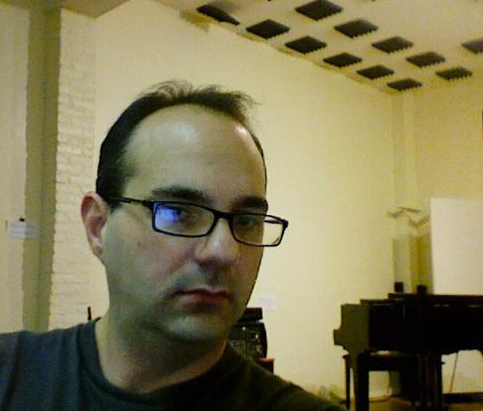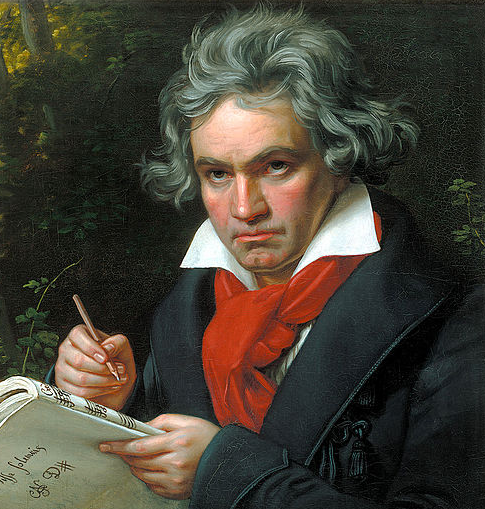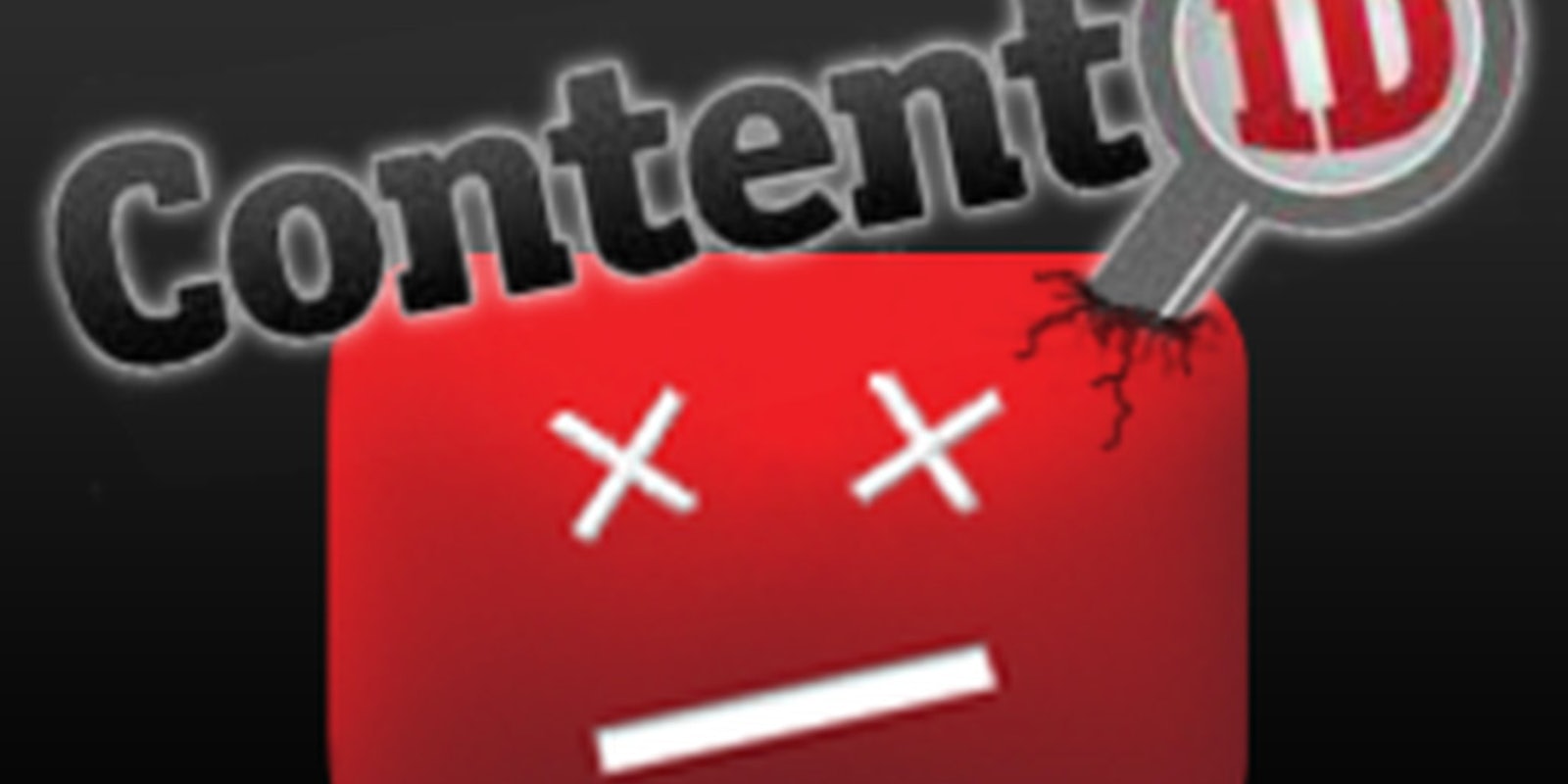Kevin MacLeod spent five hours clearing up copyright issues with YouTube on Oct. 24. The Google-owned company didn’t believe that he owned his own music.
The mixup stemmed from the growing pains found within YouTube’s Content ID system, a humongous automated copyright management platform designed to give rights holders control of their content. It’s a wonder when it works. But when it doesn’t—as is too often the case when MacLeod’s music is involved—it can sometimes take more than a half day of phone calls to sort everything out.

MacLeod is a composer who makes his living writing music from his apartment in Brooklyn, N.Y. When not working on a commissioned assignment, usually a film score or symphonic arrangement, MacLeod’s typically still working—writing, arranging, and recording ideas that he drums up in his head while he’s lying in bed or sipping on a coffee. He said that he composes roughly 300 different pieces each year on average, just a little less than one per day.
Of those, MacLeod (pictured left) will post about 100 onto Incompetech, a website he owns that offers royalty-free use of his content in exchange for $30 or proper credit. He posts everything he can onto the site—little ditties he concocted in the kitchen, eight-second snippets extracted from film scores. Thousands of people will use his works every year as background music in their YouTube videos and elsewhere. MacLeod makes his music and doesn’t care if it gets shared. That approach is the best solution he’s found to the problems music’s rights holders are facing today.
“I’m more of a firm believer that copyright is inherently broken,” he said. “Creative Commons is our best shot at creating an ultimate system that will eventually be the norm one day. “I can’t change copyright in the United States. That costs way too much money. But I can participate in an alternative movement that will hopefully show people that this is the way to go.”
***
The alternative MacLeod believes in is a system of sharing that allows for users to free access and manipulate the works that he creates—so long as they pay their proper dues.
“There are many reasons,” he writes on his Royalty Free FAQ. “The cost for me to share music is low, and the benefits are high. There are a lot of schools with no money, and plenty of filmmakers who want to have music—but can’t afford to clear copyrights from the existing systems that are set up.
“We really have no hope of overturning the existing copyright situation, but we can and are creating an alternate body of works that are able to compete with them. In time, I hope that Creative Commons will be common and successful enough to be the dominant choice for artists’ new creative works.”
And thus, hundred of creatives flock to Incompetech for content every day. That content will make its way to movies and into short films, but it’s most likely to show up on YouTube, where MacLeod predicts that more than 100,000 videos exist that feature his music.
Of those 100-some-odd-thousand videos, the large majority receive proper attribution, though MacLeod’s not likely to do anything even if they don’t.
“If you have a video with 15 views on it, I won’t do anything,” he said. “If it has something like 300,00 views on it, I might make a snarky comment on Twitter.
“The worst that I’ve done was when someone used my music in a political campaign a few years ago and I called up the candidate’s office and say, ‘Hey, that’s my music and you didn’t license it.’ Everything got straightened out and they gave me some money.”
His abundance of videos is not the reason why MacLeod spent the bulk of his Oct. 24 business day on the phone with the legal department at YouTube HQ.
YouTube had its facts wrong.
***
Here’s how the situation typically unfolds. YouTube’s error-prone Content ID system grabs hold of a video that used one of MacLeod’s compositions and misidentifies the music as belonging to someone else, an act that flags the user involved and automatically re-attributing the video’s entire ad revenue to the individual or publishing house that YouTube believes is the rightful owner of that content.
It’s something that happens in some bizarre cases—remember that filmmaker who got flagged in June for using a recording of wind blowing through the trees?—but it all too often happens to MacLeod because of the volume of work he’s published and the accessibility he’s given each one.
“It really depends on which piece of music you use,” he said. “If you’re using a piece of music written by [Ludwig van] Beethoven, there are a whole lot of assets in that Content ID database that sound a whole lot like the asset that you’re putting in your video. If you use that, it can be jumped on by five or six different agencies or publishing houses that all claim that it’s theirs.

“If you take a piece that I wrote from scratch last week, it’s very unlikely that you’ll match against that. I would say that 80 percent of the problems that I deal with are matches against classical music.”
It’s classical music that presents the most problems because classical music is often held without owner. There’s a law in place that puts published works in the public domain unless they’re published after 1923 or their composer has been dead for less than 70 years. So a piece that was originally written by Beethoven—take Symphony No. 6 in F Major, which premiered in 1808—has a composer but not a rightful owner. Any reinterpretation of that piece is up to the public domain.
MacLeod, who “really likes classical music,” says that the problems usually occur when someone takes a piece that was originally his and uploads it to a site like Amazon or CD Baby.
“They’ll rename the pieces and claim that they own the music, which they’re legally allowed to do,” he said. Artists who use MacLeod’s music can share, remix, and make commercial use of anything they choose to use, so long as they keep sufficient credits and licenses intact. The problem for MacLeod is that CD Baby files those pieces with YouTube’s Content ID every time they get uploaded.
“Now I’ve got 12 pieces of music that are starting to flag people’s videos,” MacLeod said. “I get emails asking what’s going on because the video’s claimed by someone else.”
A similar situation is likely to occur on the Amazon front, which he describes as “slightly less annoying.” Someone will produce an audio drama or create a relaxation CD that uses MacLeod’s music as background music and records words or singing over the top of it.
That person will upload their version to Amazon, which will subsequently throw the files into YouTube’s Content ID.
“Now my background music matches against the music that Amazon put in, and Amazon thinks that they’ve got a handle on this music and throws it into the Content ID mix,” MacLeod said. “So I have to get Amazon to go in and remove the assets from Content ID but still keep them on the Amazon store.”
In both cases, MacLeod gets tasked with the assignment of cleaning up someone else’s mess.
“I have to send a legal letter over to CD Baby or Amazon telling them to take the assets out of Content ID but still keep them on their online stores. Normally it gets done. I don’t call up a technician. I call up the legal department, and it’s almost never a problem. It’s just time consuming and irritating. I’ve never had a company come back and claim it was their stuff. It’s not their stuff. That’s clear.”
CD Baby was able to confirm MacLeod’s experiences.
“If he makes his music available as ‘royalty free’ without specific terms of use for those who download it, this sort of usage can happen,” Kevin Breuner, CD Baby’s director of marketing, told the Daily Dot.
***
Then there’s the other side of the coin, the side that pertains to YouTube—the users, content creators, and publishing houses that own the rights to real compositions and think, albeit through the intelligence of a computer database, that they own the rights to MacLeod’s compositions.
“Sony, Universal, GoDigital, Harry Fox,” MacLeod rattled each off. “There are fifteen of them that are all making money from me.”
Those publishing houses, among others, are the ones flagging videos like those that come from small-time YouTube partners like Steve Miller and Jim “MULLY” Mullins, two American expatriates living in Asia who regularly publish personal vlog videos or tourism clips that feature pieces of MacLeod’s works.
The two boast a combined subscriber count of less than 14,000 and more or less make videos for their own personal enjoyment, but both have endured their fair share of wrongful flaggings. For Mullins, the first case occurred 18 months ago on a video series about replacing guitar strings.
“I wanted it to be in-depth, and so altogether it took about 45 minutes,” Mullins told the Daily Dot. “I broke them all into pieces and put music over the boring parts”—music that came from MacLeod’s Incompetech site. A few days later, he received an email from YouTube saying that two of his videos had been flagged.
“Copyright problems,” he said, “copyright problems on two of the five videos.
“The other three were left untouched, but I appealed the other two and everything, and I’ve never heard back.”
A similar situation occurred for Steve Miller earlier this year. In September, the QiRanger travel vlogger, who’s currently stationed in South Korea, got flagged for copyright infringement on a video titled “Rebuilding Namdaemun,” which incorporated MacLeod’s work.
But YouTube ruled that the composition in question wasn’t MacLeod’s and was instead a 1974 disco song by the Rubettes called “Sugar Baby Love,” one that doesn’t sound at all like the classical orchestral piece that he’d obtained the commercial license to use.
Miller’s saga, which the Daily Dot covered when it broke, led him through the depths of EMI Music and Warner/Chappell Music, two labels that showed up as having management rights to the track.
But when Miller made the necessary efforts to contact the labels, he learned that neither of the two actually held any rights to the song.
In both cases, the two creators lost their ability to pull revenue from the ads that ran on their videos. Instead, those dollars—or pennies, as Mullins articulated—went to the purported rights holders of each composition—something that’s not technically fair, if at all ethical—until the channel owner’s able to straighten out the situation. That can sometimes take days, weeks, or in Mullins case with the guitar stringing videos, not happen at all.
“I make videos for the fun of it,” Mullins said. “Although I am a partner on YouTube, it’s not a monetary thing. I don’t do it for that. But when they flag my video, depending on how long it takes them to get back to me, the cycle of my video may be finished. The hits are done and I never got a penny off it because it’s been hanging in dispute for a week.
“You have to research who has what and get the contact information and then write your letters. At that point, you’re just waiting. Who knows how long it’ll take to get back to you.
“It’s been two years since those guitar videos, and I haven’t heard a peep out of them.”
Miller, on the other hand, has been so unsuccessful in getting through to YouTube’s brass that his emails are now seen as spam by the site’s copyright filters.

“Not sure why it would have happened,” Miller wondered aloud in an email he sent late October. “But it is disconcerting that I can no longer email YouTube’s copyright email and have it read.
“Not that I can confirm that it was ever read in the first place, since they never replied.”
Miller and Mullins have lost out on what they both concede amounts to a huge stack of copper pennies, but MacLeod cringes when he thinks about the mass of money that’s gone into the wrong hands on account of faulty Content ID claims.
What’s worse is that there’s not much he can do.
“The problem is that the systems [YouTube has] engineered weren’t designed for people like me,” he said. “They were designed for publishers. So my solution is to become a publisher and put all of my own stuff into Content ID. Whenever somebody uploads something, it will get attributed to me and no one else can claim it.
“That’s a brilliant idea, right? It doesn’t work that way. If it’s attributed to me, I get all the ad revenue. I don’t want that. I just want it to be attributed to me and then have all the people who uploaded it get all the revenue.”
His solution foiled by his own logic, MacLeod is left to toil with the disregarded.
“YouTube made a change in their contest policy before Oct. 3,” he explained, referencing the “Improving Content ID” change that gave content owners the choice to either release any claims or file a DMCA (Digital Millenium Copyright Act) notice. “Before then, it was even worse. Now it’s better, but not great. The annoyance has shifted from me to the user.”
He thinks that YouTube needs to add an extra flag to its Content ID notification database, one that allows rights holders to say “Yes, that music is what you think it is, and yes, that person can use it.” However, he concedes a change is unrealistic.
YouTube boasts a userbase of more than 800 million people and sees more than 72 hours of content upload to its servers every minute of the day. It has to play to the one percent. The 99’s simply too big. Which is why, on Oct. 24, MacLeod spent five hours sorting through the site in an effort to right all the times that he’s been tied to what’s wrong.
“I don’t want to relive that day,” he said. “I hate dealing with that shit. Hate it. Hate it. Hate it.
“What are my options?” he continued. “What could I possibly do? Even if I do take my content offline, there are still millions and millions of copies out there.
“I could stop publishing new material. I could do a new music boycott until shit gets fixed. I could do what I do and not publish any of it—do the video games and the movie scores and not publish any of it and see how that goes.”
Then he paused for a minute to consider the impact that would have.
“That’s a good idea,” he joked. “I’ll start a boycott of myself.”
YouTube did not respond to multiple requests for comment.
Illustration by Jason Reed; photo of Kevin MacLeod via Photo via Last.fm; illustration of Beethoven via Wikipedia


